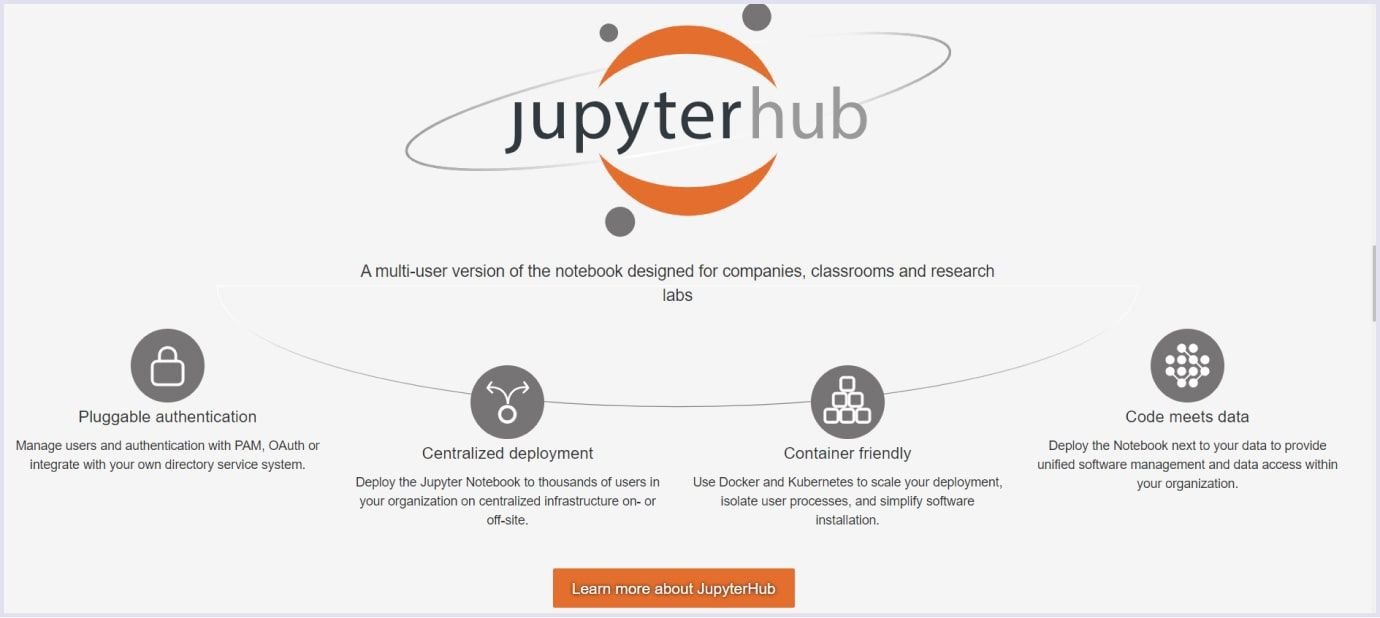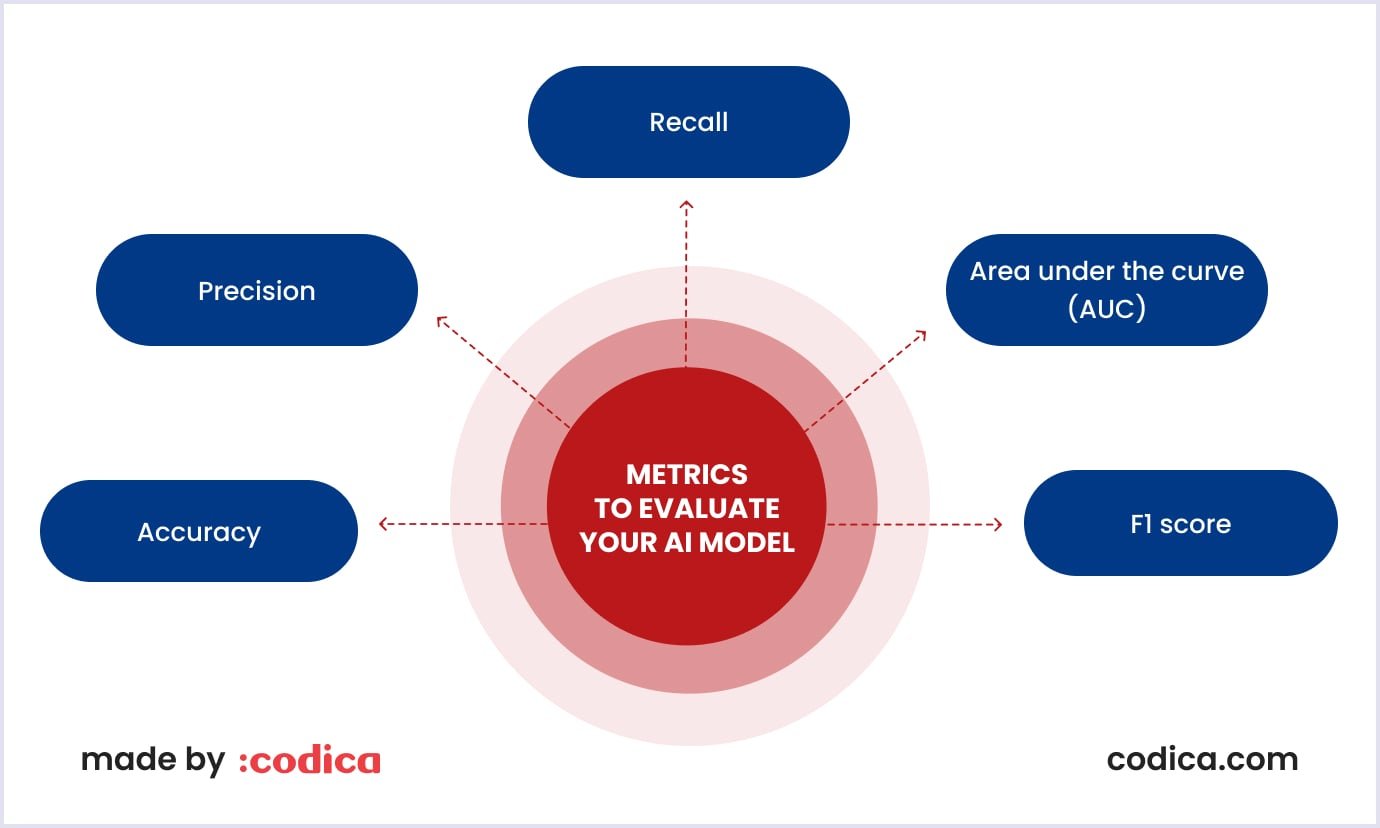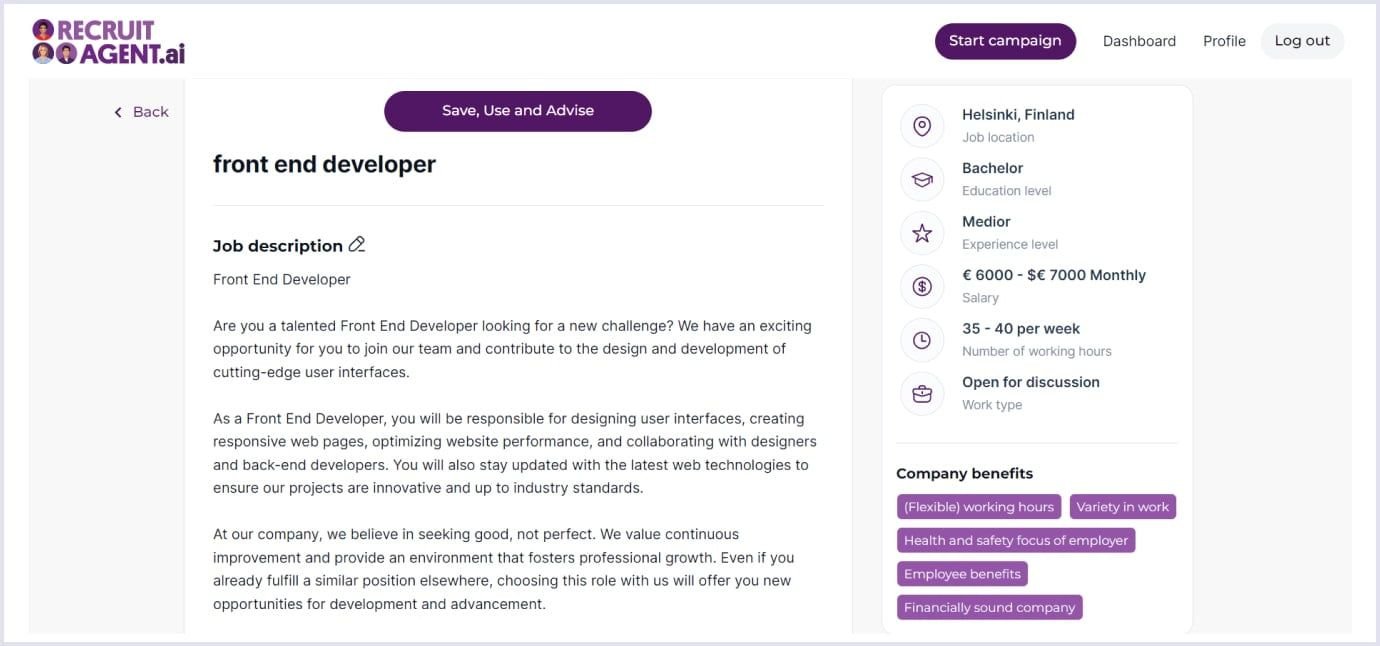Artificial intelligence (AI) has reshaped the market and brought many positive changes in different industries. Thanks to its ability to analyze large datasets and recognize patterns, it is used in sales, security, entertainment, and more. Businesses implement AI systems to deliver better customer experiences and ensure trust in their brands.
When creating an AI model from scratch for your business, consider that it is a multi-faceted process. You must use specific techniques to prepare data and then train and adjust your AI model.
In this article, our experts share their experience with the tools and methods you can use to achieve the best results with an AI model. Through this overview, you will learn how to create an AI system. So, your AI model brings value to your customers and helps you thrive.
So, how does AI work step-by-step? Let’s dive in.
Define your objectives and goals
Creating AI involves clarifying goals. Thus, you will understand what you want to gain. Making decisions about specific problems to solve is integral for success. This lays the foundation for your AI project's success.
Consider the following scenarios. Do you want to improve your customer service with a chatbot? Does your aim involve improving product recommendations in your online marketplace? Or do you need comprehensive data analysis? It is imperative to comprehend objectives and goals.
At Codica, we recommend you begin with product discovery. This stage outlines your project’s objectives, opportunities, and limitations. Our professionals will help you understand how AI will enhance your product according to your goals and objectives. The video below guides you on how we hold product discovery sessions and the deliverables you get.
Research and choose the right technologies
Once you’ve set your objectives, you can select helpful technologies. The AI ecosystem is rich and versatile and provides different technologies. Also, think about your project’s future and choose the tools that have robust support. This will enable you to plan how to develop an AI system.
For example, popular machine-learning libraries include TensorFlow, PyTorch, and scikit-learn. These libraries are flexible, scalable, compatible, and easy to use, with extensive resources and strong community support.
Complement these libraries with integrated development environments (IDEs) and data visualization tools. They also benefit from AI development services. For instance, the Jupyter Notebook is a powerful tool for interactive development. It includes code, narrative text, and visualizations for a streamlined development workflow.

Data collection and preparation
Collecting and preparing data is the cornerstone when you plan how to develop an AI system. Relevant and high-quality data are essential for training your model. You can collect data from different sources depending on your objectives and project peculiarities. They include databases, APIs (application programming interfaces), web scraping, and user-generated content. Ensure that your data helps solve the problem you’ve outlined.
Once collected, data needs to be prepared before creating AI. The process involves filling in missing parts, defining categories, and dividing the data into training and test sets. Ensure that you prepare data accurately and properly. Thus, your AI model receives the right input for correct work and better performance.
It is also vital to consider the ethical aspects of data collection. Ensure that you obtain the relevant permissions and act following data protection standards. For example, the General Data Protection Regulation is a standard for the European Union. It protects users’ personal information.
Exploratory data analysis (EDA)
This method is a crucial step when you decide how to build your own AI from scratch. Exploratory data analysis helps you spot trends, detect patterns, and consider relationships in your data. You can use different techniques like plotting histograms, scatter plots, and more.
EDA helps you obtain valuable insights from your data and spot issues. For example, you can organize your data and spot data transformation. The problems in your data might include outliers, skewed distributions, and false correlations between variables.
Different tools can be used for EDA. For example, Matplotlib, Pandas, and Seaborn are commonly used libraries. These libraries help you manipulate and visualize data so you can gain deep insights. EDA is valuable for providing deep analyses and setting the basis for the advanced development of your AI system.

Selecting the right model
Depending on your goals, you can select the right model. You can choose from decision trees, neural networks, or ensemble methods. Each model provides different opportunities and challenges. So, consider their complexity, interpretability, and performance when choosing how to create an AI system.
For instance, if you need a model for image and speech recognition, neural networks are a good way to go. They require significant computing resources, though. On the other hand, decision trees are a perfect option if you need a solution for small data sets.
It’s also crucial to understand the trade-offs you get with each model. Complex models provide high accuracy, but they are also challenging to interpret and maintain. Aim to balance these sides to choose the right model for your business project needs.

Training the AI model
When training your AI system, you flow your selected and adjusted data into your chosen algorithm. The latter learns and identifies patterns and relationships. It is vital to prevent overfitting in this process. For this, separate your data into training and validation sets. The model adjusts its parameters during training for better accuracy and fewer errors. Thus, you get all the benefits of EDA when thinking of how to develop your own AI.
You should monitor training metrics such as loss and accuracy during learning. This control ensures that the model learns effectively. As learning may require significant resources, leveraging graphics process units (GPUs) and cloud solutions is helpful. You will get excellent results even when training complex models. Google Cloud GPUs, Azure N-Series virtual machines, IBM CLoud GPUs, and similar technologies will help you.
Another crucial aspect of AI model training is saving regular checkpoints with intermediate models. This technique allows you to revert to previous versions if necessary. It also creates a protective shield in case of interruptions. Meticulous training ensures that your model reaches the optimal performance for deployment.
Evaluating the AI model
After you’ve trained your system, you can check its performance on unseen data. You can use several metrics, such as accuracy, recall, and more. They help you see if the model generalizes data accurately by calculating true and false positives and negatives.
For example, if you anticipate a positive and the model returns a positive, it is a true positive. If a negative is anticipated, but the model returns positive, it is a false positive. Based on such results, you spot issues, like underfitting or overfitting, and can remove them.

In addition to quantitative metrics, qualitative metrics are used. They involve the examination of particular predictions and their context. Thus, you get a comprehensive picture of your AI model’s accuracy and behavior in real-life scenarios.
Using a test set that is not applied to your AI model’s training is crucial for evaluation. You may need to adjust your model or collect more data. Evaluate your AI model regularly. This process will ensure its better performance and evolution over time.
Fine-tuning and optimization
This process means implementing small changes to your AI model to improve performance for specific use cases. Many fine-tuning techniques can be used to improve the model’s parameters. For example, hyperparameter tuning involves improving a neural network's learning rate, batch size, and number of layers.
It is common practice to freeze lower layers while fine-tuning your model. Thus, the model preserves the crucial features obtained during pre-training. This means that your model retains the foundational knowledge in the lower layers and can gain case-specific features in the higher layers.
Monitoring the model's performance is important when feeding labeled data to new layers. Careful adjustment of the learning rate will help maintain optimal performance.
Also, remember to save checkpoints. It will enable you to preserve results and resume training in case of issues and interruptions. Moreover, thanks to checkpoints, you can experiment with different versions of your model and choose the best one.
Deployment
Once the model is trained and optimized, you can deploy it. This process involves integrating your system into production environments. The system can interact with real users or other systems. Integration can be done via APIs, web services, or embedding the model into existing applications.
For deployment, you must ensure scalability and reliability in previous steps. In production, monitor the model’s performance. This lets you identify potential issues and maintain the system's high performance. Deployment also involves setting up infrastructure for regular updates and maintenance as new data and requirements emerge.
A clear deployment strategy with the necessary techniques will ensure your AI model’s stable performance. They include version control, rollback mechanisms, and continuous deployment (CI/CD) pipelines.
You may also like: AI in Ecommerce: Statistics, Use Cases, and Benefits
Monitoring and maintenance
These ongoing processes ensure your system is up-to-date, accurate, and well-performing. To this end, it is necessary to track your system’s performance and retrain it with new data once it is available. Automated monitoring tools will alert you to any gaps in performance so you can take measures immediately.
Ensure that your system gets regular updates. Adding new features and handling data drift will promote the system's ability to deliver valuable results. You can also encourage user feedback and reports on issues with your model.
If you need help, our DevOps engineers know how to develop a well-thought-out deployment strategy. Thanks to comprehensive DevOps services, the required aspects will ensure your AI system’s stable work and regular updates.

How Codica builds AI systems from scratch
We leverage our experience when implementing AI models for your project. When planning how to create an AI system, we start by understanding your AI model's goals. So, we select the best techniques to make it. Our experts collect the necessary data and perform the analysis needed for the model implementation.
Selecting the suitable model is followed by training and fine-tuning. At these stages, we check that the model is accurate and scalable for your business’s growing needs. Once your model is deployed, we monitor its high performance and make necessary updates over time. So, we ensure your solution works properly and is valuable to your customers.
For example, we have made many processes easy for HR specialists when enhancing the HR solution with an AI model. Thanks to integrated AI, HR professionals can now swiftly compile job openings. The system holds data on recent job description standards. Thus, with a few prompts, HR specialists create compliant job descriptions.

Check our portfolio for successful projects we have delivered for the best business results.
Takeaways
Now, you know how to create an AI model from scratch. Creating, training, and maintaining your model is an intricate process. If the process is done correctly, your model will work efficiently and evolve over time. Understanding how AI works step-by-step will ensure the best results in your customer services and business flow.
If you need an AI model added to your product, contact us. We are eager to help you enhance it with modern AI technologies.
